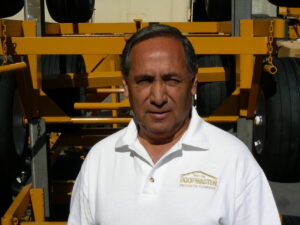Equipment Notes: Fire Hazards
Are You Sure You Closed Your Jobsite Properly?
by Eddie Garcia, territory sales manager, Roofmaster Products Company

(Editor’s Note: Eddie Garcia is territory sales manager for Roofmaster® Products Company for Southern California. With 44 years of roofing industry experience, he is known for his extensive product knowledge in equipment and tools for both commercial and residential roofing. As a product expert, Garcia helps roofing professionals and distributors find the right tools they need.)
A customer of mine recently mentioned a story about a contractor who was performing a torch down job on a commercial roof. The foreman and his crew were closing the site, and before leaving for the day, the foreman performed a visual and touch check on the deck to make sure it was cool and not a fire risk.
Later that night, however, the foreman received a frantic call from the building owner because the building was engulfed in flames. The foreman found out that the fire department was unable to save the building and it was a total loss. As a result, the contractor’s license was revoked and a large insurance claim was paid.
One thought immediately popped into my head. Did the foreman walk the whole roof? Maybe the foreman only checked the immediate areas where the torches were being used. Fire hazards on a torch down roof are plenty. Something can accidentally begin to overheat at the end of the day, and workers packing up and getting ready to head home may not notice a small fire that can quickly turn into a big disaster after hours.
More and more, OSHA is tightening the clamps on these types of jobs. There are several regulations that OSHA has in place that help reduce the likelihood of a fire hazard from a torch down, including: a fire extinguisher must be immediately accessible for all torch-down operations, a fire extinguisher is needed within 50 feet of anywhere where more than five gallons of flammable or combustible liquids or five pounds of flammable gas are being used on the jobsite; no one on a jobsite can be more than 100′ from a fire extinguisher at all times; there must be at least one fire extinguisher for 3,000 sq.ft. of a work area; a fire watch person should be posted to immediately address any possible smolders or flare-ups; and the fire watch person should remain on post for 30 minutes after the torch-down job is finished for the day.
Per an NRCA torch program and OSHA requirements for working with torches, at a minimum roofing professionals should have proper fire extinguishers in case of flare ups and an infrared thermometer to scan the deck for hot spots that are undetectable to the human eye. Pricing for infrared thermometers has drastically decreased over the past couple of years, while the features have increased. Our infrared thermometers have the added benefit of a laser pointer to help pinpoint the hotspots on a deck as well as a spotlight for off hour jobs.
Torch down roofing is a popular option across the country, particularly because of its easy application and capability of preventing moisture build-up. That being said, contractors and foremen should take caution when it comes to torch down roofs and be sure to thoroughly inspect all areas of the roof before shutting down for the day. Additionally, with the help of roofing tools, such as an infrared thermometer, roofing professionals can assure that their jobsite is safe for the evening or weekend.